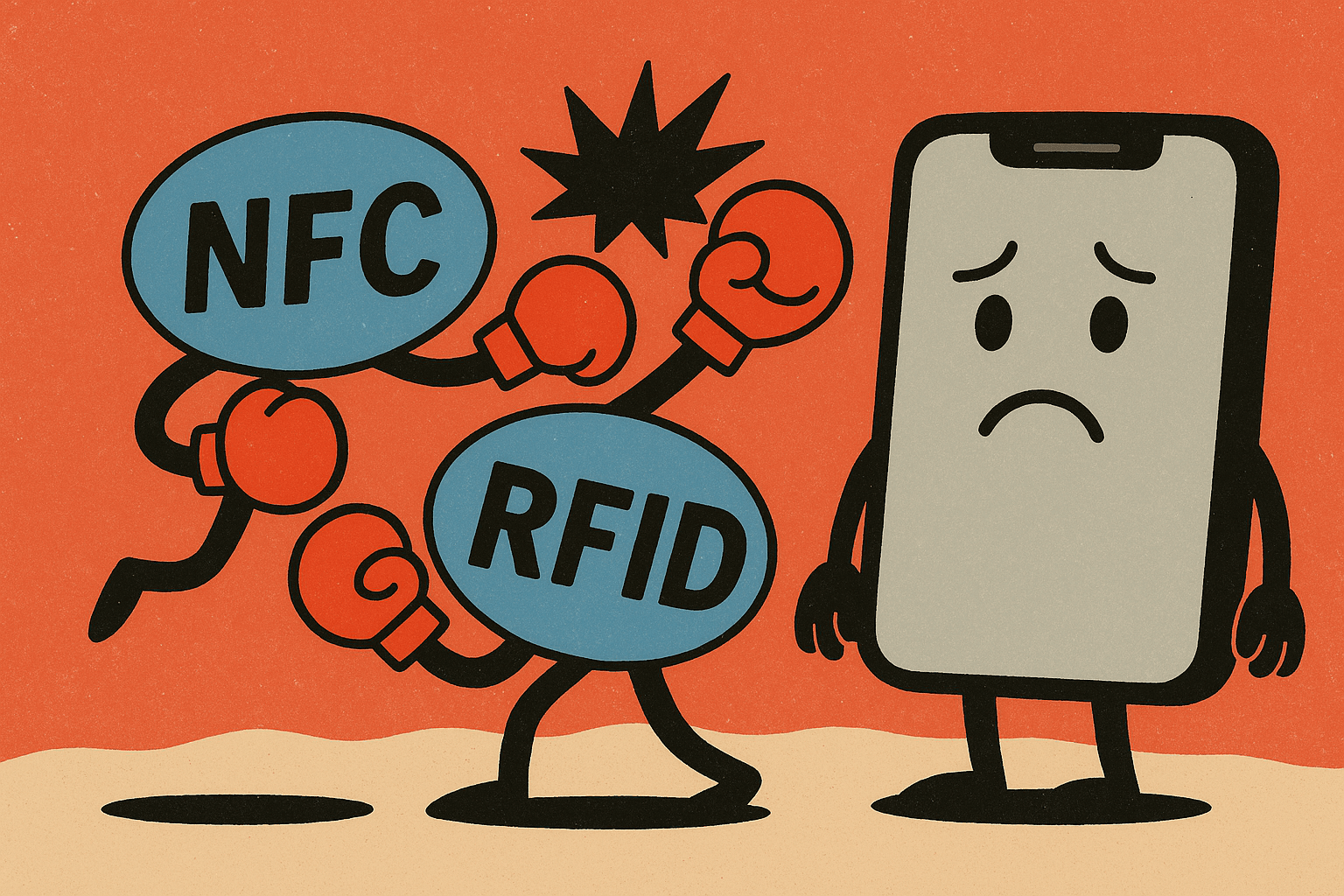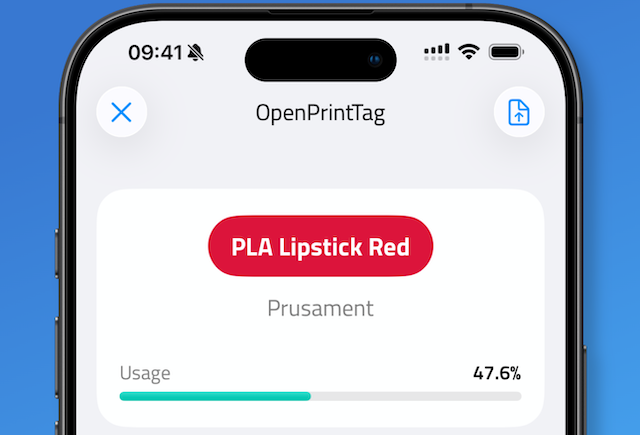Why Can't My iPhone Open My Condo's RFID Door? Understanding NFC vs RFID

Ever find yourself confidently tapping your iPhone on your condo's entry system, expecting the magic to happen, only to face the cold, indifferent silence of a locked door? You're not alone. And before you start wondering if Siri is holding grudges, let's clear this up: Your condo's card isn't playing by your iPhone's rules.
First, the Tech Talk (Without the Geek-Speak): RFID and NFC Explained
- RFID (Radio-Frequency Identification): RFID is a broad technology used to wirelessly identify and track objects. Think of RFID like shouting across the street to a friend - it’s typically a one-way communication where your condo's RFID card broadcasts a signal, and the door listens. RFID comes in different flavors, including low-frequency (LF), high-frequency (HF), and ultra-high-frequency (UHF), and it's commonly used for access cards, pet microchips, inventory tracking, and yes, those pesky condo cards.
- NFC (Near-Field Communication): NFC is essentially a specialized subset of RFID operating specifically at high-frequency (13.56 MHz). It's like a cozy chat between two friends standing very close to each other. NFC enables two-way communication, secure data exchange, and interaction, which is exactly why your iPhone uses NFC for features like Apple Pay, AirTags, and digital business cards.
Why Your iPhone Says 'No' to Your Condo Card
Now, here's where the drama unfolds. Your condo access card likely uses a form of RFID that's outside the NFC standard your iPhone recognizes - often low-frequency or proprietary high-frequency RFID encrypted in ways your iPhone can't interpret. Apple intentionally designed the iPhone to work exclusively with NFC for security, battery efficiency, and a consistent user experience.
Simply put, your iPhone doesn't speak your condo's RFID dialect. It's like expecting your Netflix subscription to let you into a cinema. Same concept, different worlds.
Can You Clone or Copy the Condo Card to Your iPhone?
In short, nope. Apple’s wallet and NFC system are specifically locked down to avoid security nightmares - like someone easily copying your credit card or condo key. Imagine if anyone could clone cards onto an iPhone: your apartment lobby might as well be a revolving door.
So, while it’s frustratingly convenient in theory, Apple’s intentional limitation here is all about keeping your digital life safe.
What Can You Do Instead?
Since Apple isn’t budging anytime soon, here’s how to live peacefully with the RFID reality:
- Smartphone-compatible Systems: Ask your condo administration about upgrading to modern systems compatible with digital wallets.
- NFC Stickers or Tags: You could use programmable NFC tags at home or in controlled scenarios - but remember, your condo’s system needs to play nice.
- Dedicated RFID Cards or Fobs: For now, keep that condo card handy.
Bottom Line
It's not your iPhone being stubborn; it’s Apple prioritizing security and uniformity. Until buildings broadly embrace NFC-compatible systems, that piece of plastic remains your key to entry. Your iPhone remains great for payments, digital business cards, and impressing your friends - but sadly, condo doors are still stuck in the past.
And hey, at least now you have a good story for your next awkward elevator ride.
Discover the Best Blogs
Stay updated with our featured blog posts.

OpenPrintTag Support NFC.cool iOS

Building a Great App Clip Experience: Lessons from NFC.cool Business Card

Understanding the different types of NFC Tags and their suitability for iPhones

Help, I can't remember anyone I meet! This smart digital business card app for iPhone can.

OpenPrintTag Support NFC.cool iOS

Building a Great App Clip Experience: Lessons from NFC.cool Business Card

Understanding the different types of NFC Tags and their suitability for iPhones

NFC.cool Insights: Exploring the Power and Potential of NFC.cool

Breaking Free from Monotony - Adding Flair to QR Codes

Tap, Scan, Thrive: NFC.cool's QR Code Symphony in the Digital Age

